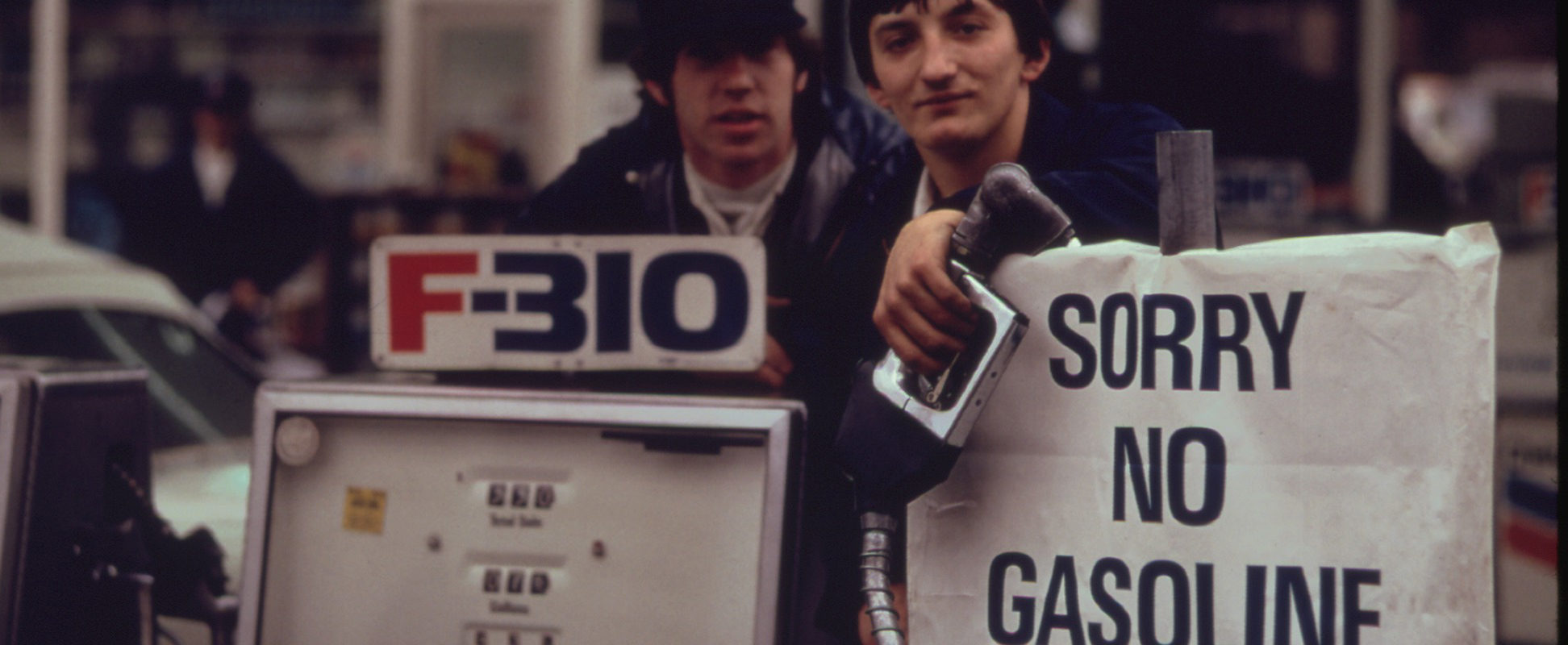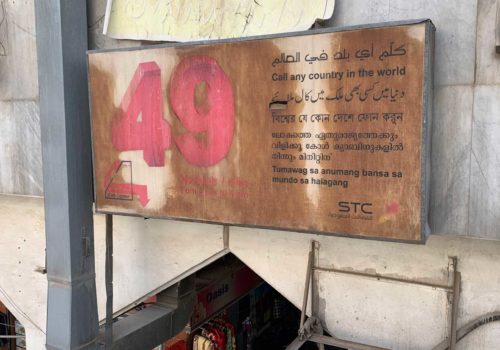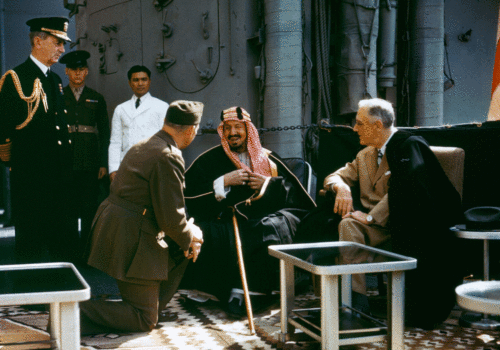BEIRUT — The first time your average American would have had reason to think about Saudi Arabia was in October 1973. As the Israeli and Egyptian armies battled for control of the Sinai Peninsula in what became known as the Yom Kippur War, the Saudi government spearheaded an OPEC oil embargo of the United States and several other countries to protest their support for Israel.
As the embargo dragged on, Americans found their lives transformed by the decisions of a monarch living half a world away. The United States bill for oil imports soared from $4 billion in 1973 to $24 billion in 1974. The lights in Times Square were switched off as Americans confronted long lines and rationing at the gas station. Newspapers worried gloomily about a recession to rival the Great Depression. “The Future will be Subject to Delay,” read a Financial Times headline in the cold winter of 1973.
It is a sign of how the global economy has changed that Saudi Arabia just dealt the US economy a blow by doing precisely the opposite of what it did in 1973. In the midst of a global economic slowdown prompted by the coronavirus, Saudi Arabia announced it would boost oil production and slash the export price of its oil by $6 to $8 per barrel.
The cause of the turmoil was the breakdown of a Saudi-Russian agreement to manage the price of oil since 2016, when the two countries formed an alliance to maintain a floor on crude oil prices. It began on March 5, when Saudi Energy Minister Prince Abdelaziz bin Salman and his allies in the Organization for Petroleum Exporting Countries (OPEC) met in Vienna’s Park Hyatt Hotel to agree production cuts that would support oil prices in the face of decreasing demand. But when Moscow refused to make similar cuts, Riyadh swung in the other direction, announcing an increase in production and a dramatic slashing of prices.
The Saudis’ goal is to cause enough economic pain for Moscow to force it back to the negotiating table. Some analysts are skeptical that gambit will pay off. “I think Saudi Arabia is much more at risk of having to adjust its policy,” said Ellen Wald, a senior fellow at the Atlantic Council Global Energy Center and author of Saudi Inc., a book about Aramco’s history. “Russia’s economy is not quite as dependent on oil revenues as Saudi Arabia’s economy is. And despite all of these grand [economic diversification] plans of Vision 2030, [Saudi Arabia] has only succeeded in making their economy more dependent on oil.”
It’s a sign of how the global economy has changed that Saudi Arabia just dealt the US economy a blow by doing precisely the opposite of what it did in 1973.
The competition between Moscow and Riyadh has driven the price of Brent crude below $30 per barrel, half of what it had been a month earlier. President Donald Trump tried to put a positive spin on the plunge, tweeting: “Good for the consumer, gasoline prices coming down!”
But that response vastly oversimplifies the impact falling oil prices will have on the American economy. US shale output has risen dramatically since 2009, reaching nearly 13 million barrels per day by the end of 2019—making the United States the world’s largest oil-producing country. The increase has been driven by the growth of shale producers, most of whom need oil prices at roughly $50 per barrel to break even.
But if the decisions Saudi Arabia made about energy markets in 1973 and 2020 both caused the American economy harm, the two incidents promise to have vastly different effects on the kingdom’s own finances. In fact, the ongoing oil price war has brought into stark relief the short-term, medium- and long-term economic challenges facing the kingdom.
Saudi Arabia’s immediate challenge stems from a budget shortfall the drop in oil prices may cause. While the 1973 oil embargo resulted in an enormous financial windfall, the current price decrease risks depriving government coffers of the revenues needed for Crown Prince Mohammed bin Salman’s Vision 2030 plan. According to the International Monetary Fund, the Saudi government needs oil prices to reach $83 per barrel to pay for its expenditures—any lower and it will need to dip into its foreign exchange reserves, lift domestic energy subsidies or borrow to finance its deficit. Saudi government agencies are already preparing for a round of belt-tightening after an order came down from the Finance Ministry to submit proposals to slash budgets by as much as 30 percent.
That challenge may not be as difficult as it appears. In addition to slashing the price of oil, Saudi Arabia has increased its own production to 12.3 million barrels of oil per day. Wald and other analysts have argued that production increase will likely offset the drop in price, causing Saudi oil revenues to remain roughly the same as they would have been otherwise. “There are two ways you can make more money by selling oil: You can sell less of it at a higher price, or you can sell more of it at a lower price,” Wald said. “Saudi Arabia’s cost of production for oil is so low that it makes more sense to sell more at lower prices, because its cost of production is about $2.80 [per barrel].”
The medium-term challenge concerns investors’ attitudes toward Aramco, the world’s largest oil producer. The Saudi government conducted an initial public offering (IPO) of the national oil company in December, selling 1.5 percent of Aramco’s value to raise over $100 billion to finance its diversification plans. Aramco shares have fallen during the recent economic downturn to well below the opening price offered during its IPO. For Saudi Aramco, the bigger problem than the dip in share price is how investors perceive the company’s balancing of its twin imperatives—to maximize value for shareholders and serve the government’s political interests. One energy analyst described “an air of unreality” during a recent earnings call as Aramco officials tried to find justifications for the company’s actions.
The price war has provided an object lesson in that in the event of a conflict between the interests of the investors and the Saudi government, Riyadh wins. On the call, Saudi Aramco President Amin Nasser said the company would maintain sky-high production as long as necessary and was even expanding its maximum sustainable capacity (MSC) to 13 million barrels per day. Investors can’t say they weren’t warned: Written into the company’s prospectus is the stipulation that only the Saudi government can determine Aramco’s maximum sustainable capacity, and the associated costs “could have a material adverse effect on the Company’s business [and] financial position.”
Wald believes the issue partly concerns investors’ need to “listen to the government. And that scares investors away because they’re afraid that Aramco is not producing for higher revenue, but they’re producing because the crown prince of Saudi Arabia got into a fight with [Russian President Vladimir] Putin.” Investors are right about that, she added, “because it certainly looks like that’s why Aramco is being forced to produce more [than it would without government direction].”
The final and long-term problem for Saudi Arabia gets to the heart of how we measure the kingdom’s wealth. The issue hinges on the question of whether the sale of a barrel of oil represents production or consumption of value. The former definition usually rules the day: The number of oil barrels the company sells, and the price at which it sells them, do much to determine Saudi Aramco’s profitability and the kingdom’s gross domestic product.
However, a small group of economists have come to question whether that’s an accurate way to understand the wealth of an oil-rich state like Saudi Arabia. These economists argue that every barrel of oil sold is an act of consumption—the country is exploiting a finite natural resource that can never be pumped again. In this understanding, the sale of oil should be seen as a depletion of its most valuable resource, not just the production of a good.
“The nonrenewable and highly depreciative nature of oil and gas, and its unstable market, is hardly something for the government to continue to hang its hat on,” wrote Abdulaziz AlDukheil, a former Saudi deputy finance minister, in Saudi Government Revenues and Expenditures: A Financial Crisis in the Making. “The government’s high oil and gas reserve depreciation and low level of savings and investment… means that this valuable resource will, sooner or later, cease to exist to the detriment of your average Saudi.”
Viewed from that perspective, Saudi Arabia’s current strategy looks more problematic. The government may be able to boost production to make up its current budget shortfall—but it is also depleting its most valuable asset for a discount price. The Saudi government, AlDukheil says, should be investing its oil revenues in productive capital that can ensure a sustainable future for the kingdom’s residents. But according to his calculations, the kingdom has consistently fallen short of that goal.
Oil prices will likely remain low for some time, driven down by both the economic downturn that has accompanied the spread of the coronavirus and the market’s concern over another round of price-cutting from Saudi Arabia and Russia. But even after prices inevitably recover, the long-term questions about Saudi Arabia’s economic health will remain.




